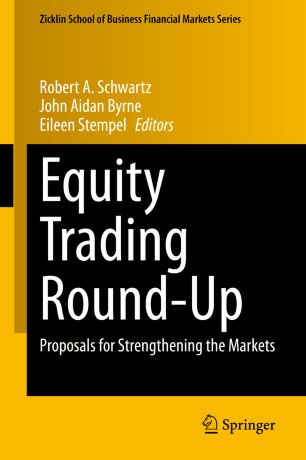دانلود کتاب Equity Trading Round-Up: Proposals for Strengthening the Markets - Original PDF
Author:
Robert A. Schwartz, John Aidan Byrne, Eileen Stempel
0 (0)
توضیحات کتاب :
This book examines the complexity of trading and the creation of liquidity. Titled after the Baruch College Financial Markets Conference, Equity Market Round-Up: Proposals for Strengthening the Markets, this book explores how regulation has a clear impact on market structure and, therefore, how market structure impacts efficient trading and capital formation. The following questions are analyzed: What are the liquidity strategies for pricing and interacting? Is liquidity any more available today for an illiquid stock than it was on the floor of the exchange 20 years ago? How do we cope with the dynamics of a continuous market? How can market structure be improved? What are the effects of high frequency trading? The Zicklin School of Business Financial Markets Series presents the insights emerging from a sequence of conferences hosted by the Zicklin School at Baruch College for industry professionals, regulators, and scholars. The transcripts from the conferences are edited for clarity, perspective and context; material and comments from subsequent interviews with the panelists and speakers are included for a complete thematic presentation. Each book is focused on a well delineated topic, but all deliver broad insights into the quality and efficiency of the U.S. equity markets and the dynamic forces that are changing them.
سرچ در وردکت | سرچ در گودریدز | سرچ در اب بوکز | سرچ در آمازون | سرچ در گوگل بوک
1,123 بازدید 0 خرید










